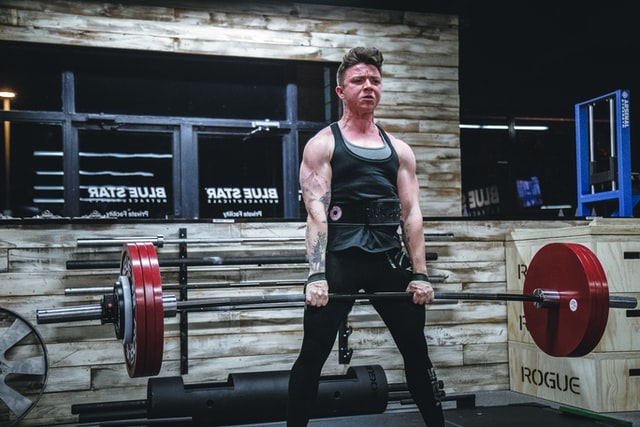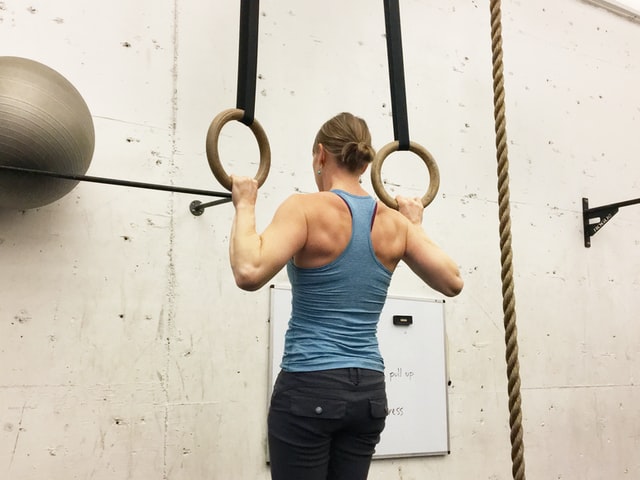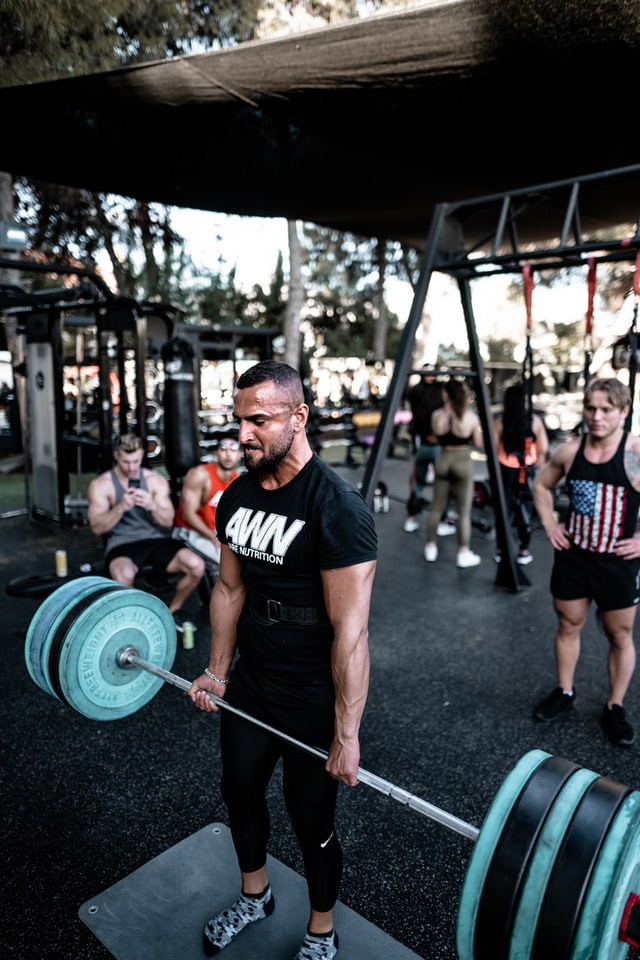The periodization of training
Training periodization is still a way to “schedule” or “organize training.” This article describes in detail what it consists of and provides an introduction to linear and nonlinear periodization.
In this series of articles we deal with some of the most important concepts of strength training, collecting notes from the recently published book Strength, Speed and Physical and Sports Performance written by renowned researchers Juan José González Badillo and Juan Ribas Serna.
Without going into any type or model yet, the basic principle of “periodization” is the change in volume and intensity over the training time frame. The typical trend of these changes is from high volume with low intensity to low volume and high intensity. Naturally, they do not make sense, although it is not the most important thing, that this model of training organization (intensity and volume manipulation), already used by the Greeks in antiquity, is identified with a specific name and not with a term. generic that includes its characteristics in its definition, such as the term “programming”.

More specifically, it is considered that “periodization” has as its main objectives
- The appropriate balance between training loads and preparation for competition during the season;
- Control fatigue and reduce the probability of reaching overtraining; and
- Getting ready for competition at the right time (DeWeese et al., 2015).
One would have to wonder if there is any model, plan, program, way… of training that does not seek these objectives. It does not seem reasonable to accept that by giving it a specific name all these objectives will be met. And, furthermore, it is said that this is achieved mainly by adequate (non-linear) variability, which can be achieved through manipulation of volume, intensity and selection of exercises. Naturally, there is no training program, whatever its name, that does not contemplate and apply this manipulation.
A differentiation between “periodization” and “scheduling” is sometimes proposed. Considering that in the first case it is “a division of training time into phases that guarantee when the necessary adaptations have to be made to achieve specific performance objectives”. While the programming is “the concretion of this work plan through the determination of the exercises, series, repetitions, intensities, pause times…”.
programming is “the realization of this work plan through the determination of the exercises, series, repetitions, intensities, pause times…”
Naturally, “achieving the appropriate adaptation or performance objectives at a specific time” is a wish (“periodization”), without any basis or justification, and that only makes sense if accompanied by the proper and adequate manipulation of the variables that determine the applied load is a big problem under study and not easy to solve) and the effect that this produces (the way to measure the effect is also an important problem, not always adequately solved).
Therefore, regardless of other considerations that question the use of the very concept of “periodization”, what is really important is, once again, the manipulation of numbers; intensities, series, repetitions, rest times… Therefore, “periodize” has no meaning or effect on performance without the expression of the variables that determine the load.

linear periodization
While the volume tends to increase from the beginning of the training cycle until it reaches its maximum value soon, and then decreases until the end of the cycle, the intensity presents a tendency to increase from the beginning of the cycle. When this occurs, the training schedule is referred to as “linear periodization” (PL). The term “linear” itself is not very consistent with reality either, since neither the volume nor the intensity evolve in a neal way, but with a tendency to increase or decrease, but necessarily with permanent ups and downs of greater or lesser magnitude.
When it comes to strength training, in LP four main phases or objectives or denominations are usually differentiated: “strength-endurance” or “muscular resistance” phase, “hypertrophy” phase, “maximum strength” phase and phase of “power”. The latter is sometimes divided into a “force-power” phase and another “power” and “RFD peak”.
When it comes to strength training, in PL four main phases are usually differentiated
This type of approach is also sometimes referred to as “block periodization”. All these names are meaningless because:
- In the phase of “strength-endurance” or “muscular resistance” there is also an effect on hypertrophy, strength and power,
- In the “hypertrophy” phase, muscular endurance, strength and power are improved, then there would also be resistance, strength and power phases: would it make sense to improve hypertrophy and not improve strength? strength, is it possible that the power does not improve? For both questions the answer is negative, an affirmative answer is not possible in either of the two cases,
- From the foregoing it can be deduced that if strength improves (third phase), power will necessarily improve, and it is also probable that hypertrophy and resistance will continue to increase, then this phase is also one of power and probably also hypertrophy, and if the strength, surely it will also improve resistance to the same load,
- It is not possible for power to improve in the fourth phase without strength improving.
In summary, “giving names” to the phases is, in addition to being useless, clearly wrong and indicates a lack of knowledge of the training effect. The approximate and typical loads of these phases are usually the following:
- In the “strength-endurance” or “muscular resistance” phase, training sessions are programmed with a high number of repetitions per series (15-20), with a stress character (EC) maximum, that is, 1-3 series of 15-20RM (maximum number of repetitions possible in the series, which is known as “until muscular failure”), and the recovery time is low, one minute maximum. The percentage of the RM could be of the order of 60-65%. This training is proposed for 2-3 days / week
- In the “hypertrophy” phase, training is scheduled with a high number of repetitions and series with maximum EC (4-6 series of 8-15 RM), and a recovery time between series of 1-2 minutes. The percentage of the RM would be approximately 65-80%. This training is proposed for 3-5 days/week.
- In the “maximum strength” phase, the number of repetitions per series is reduced (3-5 series of 3-8 RM) and “muscular failure” continues, the percentage of the RM would be estimated between 80 and 90 %, and recovery time between sets of 3-5 minutes. This training is proposed for 3-5 days/week.
- And in the “power” phase, the highest intensities are reached (3-5 series of 1-3RM), the estimated percentage would be 90-100% of the RM and 5-8 minutes of recovery 4-6 days / week ,
“Giving names” to the phases is, in addition to being useless, clearly wrong and indicates a lack of knowledge of the training effect
In the first three phases, single and multi-joint exercises are included, and in the fourth, multi-joint exercises are a priority, but always, as in the other phases, for muscles and small ones. In the first three phases it is usually indicated that the movement be carried out at a moderate speed, even setting specific and constant times for the concentric phase of the movements or a certain stable proportion of eccentric-concentric time, and in the fourth phase it is usually call phases of “morphological adaptation”, and the last two of “neural adaptation”.
With some small variations in the magnitude of the loads, this is the guide model that is proposed with great frequency in the literature to apply to athletes, whatever their specialty, and to non-athletes, although for these sometimes more are proposed. repetitions per series, because supposedly “it is a minor load”.
This approach, which is the most common and widespread, in addition to what is indicated in previous paragraphs, needs some comments.
We haven’t met anyone who, after doing, for example, a true 10-12RM set, was able to do, with a reasonable recovery time (3-5 minutes), a second let alone a third 10-12RM set. with the same absolute charge. For this reason, in addition to the observations that we have made in previous paragraphs regarding the name of the phases and their meanings, we consider that this type of training is not possible to carry out in practice, regardless of whether trying to do so may offer better or worse results than other less tiring workouts, which will be seen in another section.
The claim that the movement is done at a specific non-maximum speed and that muscle failure is also reached is not possible, because the speed of the last repetition must necessarily be equivalent to the speed of the RM, which would be the speed minimum at which the subject can perform the exercise. This means that, if a certain execution speed is to be maintained, all the repetitions would have to be done at the RM speed or, otherwise, the proposed execution times cannot be met, because, necessarily, there would be a decrease in the execution speed.

One more point needs to be made regarding the fourth phase, the “power” phase. According to the scheme described, in this phase it is considered that “power is developed”. In addition to the fact that it has already been indicated that power has been developed in all the previous phases, unless the effect of training had been null or negative for strength, contrary to what is proposed, this fourth phase is the one in which Probably less power will be developed, since the conditions for already high power levels in the execution of the training are the least ideal: maximum load and minimum speed of execution, which gives rise to minimum values of power.
It does not seem reasonable to claim that the phase in which less power is generated in training actions is the phase in which power is developed the most.
Naturally, if only Olympic or partial Olympic exercises were used in this fourth phase, such as the clean or the power snatch, the power generated in each repetition would always be greater than performing a bench press or a sit-up. any other exercise, but this does not mean that power has not been developed earlier, nor does it mean that these Olympic exercises cannot or should not be trained in the earlier phases.
However, it is true that in some versions of the “periodized training” model, “maximum power” phases with explosive or ballistic exercises are proposed, especially based on jumps. Although these conditions would allow reaching higher power values in each execution, this variety does not solve the mentioned problems, because the power will continue without improving if the maximum force does not improve before the loads with which it is jumped, then this still does not make sense ” new stage”.
The denomination of the phases as “morphological adaptation” or “neural adaptation” is not justified, since both types of adaptations are taking place at all times, especially neural adaptation, since the nervous system cannot be excluded from either physical activity or type of physical training that is carried out.
This sequence of “objectives” and types of loads is justified because it is assumed that the effect produced in each of the phases is necessary to obtain a better result in the next one. That is, to improve strength it is necessary to have previously improved or developed muscular endurance and hypertrophy, and to improve power it is necessary to have previously improved strength. None of this is justified or adjusted to reality:
neither greater hypertrophy nor greater training volume are necessarily accompanied by greater strength gains
On the one hand, neither a greater hypertrophy nor a greater training volume are necessarily accompanied by a greater gain in strength (González-Badillo et al., 2005; Pareja-Blanco et al., 2016; Schoenfeld et al., 2019). For the same maximum and relative intensity of each session, a volume of 65% of the maximum volume performed by a group of competitive athletes offered the same effect as the group that performed the maximum volume (González-Badillo et al., 2005).
Given the same relative intensity in each session, losing 20% of the speed of the first repetition in the series produced better performance in the squat, jump and 20-meter race than losing more than 40% (situation close to muscular failure), at despite the fact that the group that lost more than 40% experienced a greater increase in muscle volume (Pareja-Blanco et al., 2016). Given the same relative intensity and number of repetitions per series in each session, performing five series produced greater hypertrophy than doing one or three series, but not greater strength (Schoenfeld et al., 2019).
On the other hand, it is absurd to consider that “before improving power, you have to improve strength”. The improvement in power at the same absolute load can only be achieved if the maximum force applied at said load has improved: more force applied at the same absolute load for the same distance means doing the same work in less ti increased power, which , necessarily, means that power has increased. If we consider power as a product of strength and speed, the conclusion is the same: more strength for more speed (less absolute load time, more power is impossible.

Therefore, with the same absolute load, it is impossible for “strength to improve without improving power”, in the same way that, in “in the power phase”, it is impossible for power to improve if at the same time it does not the maximum applied force is improving.
Naturally, the degree of load applied, and especially the degree of fatigue generated during the session, will cause the training effect to occur to a greater extent in some areas of the force-velocity curve than in others.
But, in whichever of the areas that the effect occurs, if the force has increased, the power will necessarily improve at the same absolute load. If presumed “maximum power” is measured through jumping, throwing, or lightly loaded actions, it is very likely that performance on these exercises will improve more when fatigue has been reduced, late in the process, by doing fewer repetitions per set. “and explosively” as recommended in the model. But coming to the conclusion that all the previous process is necessary to improve potency does not make any sense.
Periodization in linear or undulating periodization
The use of the same types of training described in the previous point, but applying one of them every day, every week or every two weeks, repeating the hypertrophy-strength-power sequence, in this same order or in other alternative orders, with a The tendency to increase intensity and decrease volume gives rise to what has been called non-linear or undulating periodization (NLP).
All the observations indicated for the LP would be applicable in this case, in addition to the fact that the physiological stress would increase even more, since very high intensities would be reached from the first training sessions. It is argued that this model is justified by the need to provide even greater variability to training, facilitating adaptation and recovery from different loads.
It is likely that, indeed, there is more variability in volume and intensity, but achieving greater or better adaptation and recovery between loads by including all the phases (3 or 4) mentioned in the same week is not guaranteed.








